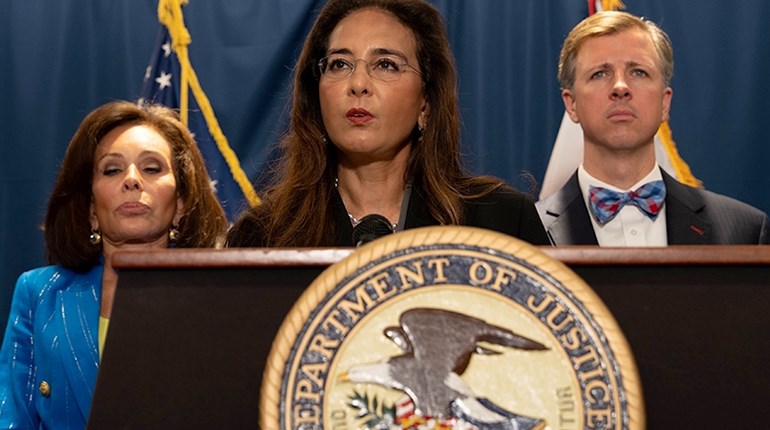
Alton Nolen had a troubled past. Drug and assault convictions landed him in prison in 2011, from which he was released in 2013 for good behavior. He secured a job at a processing plant for Vaughan Foods in Moore, Okla. For a while, his life appeared to be on track, but there began to be reports of him behaving erratically at his workplace. In late September 2014, he was suspended from his job.The two incidents share a series of similarities up to this point, but Nolen’s rampage was now at its end; Salhi’s was just beginning.
Nolen had converted to Islam behind bars and attended a mosque that has been alleged to support militant teachings. We may never know whether his next steps were primarily motivated by ideology or psychology. In any case, he retrieved a large knife and went back to work. He attacked 54-year-old grandmother Colleen Hufford in the administrative office, severing her head from her body. As employees scrambled in panic, he next turned his attention to 43-year-old Traci Johnson. That’s when Nolen had a run-in with his boss, Chief Operating Officer Mark Vaughan.
Yassin Salhi was French-born, a delivery driver for a local company and long-time family man who lived in the city of Lyon. His wife says that there was nothing out of the ordinary about their family life and religious practices, but in 2006 Salhi was investigated for alleged ties to Salafist hardliners. After two years without any evidence of suspicious activity, Salhi was dropped from the watch list.
Last month, he approached the grounds of a chemical factory outside Lyon. This time he was carrying a different cargo: the body of his boss, Herve Cornara. Before proceeding with his business, Salhi left Cornara’s head mounted on a fence outside the facility. He then got back in his delivery truck and drove to the main gate.
The two incidents share a series of similarities up to this point, but Nolen’s rampage was now at its end; Salhi’s was just beginning. Mark Vaughan shot Nolen with an AR-15 rifle he had retrieved from his vehicle before Nolen was able to land a fatal blow on Traci Johnson. Salhi, on the other hand, was waved through the facility gate by guards who recognized him from previous delivery runs. He then gunned the engine and drove directly into a pile of gas canisters, intending to cause a massive explosion that would take dozens of lives. He was not successful; the small blast that resulted only injured two workers, along with Salhi himself.
Still unopposed by an armed force, Salhi ran inside the factory and began searching for ways to trigger another explosion. He was not stopped until firefighters arrived on the scene, followed by police. Salhi was eventually wrestled to the ground and arrested. Had he been more competent in his methods, he could have produced a scene of massive destruction. In effect, those present at the scene survived only out of luck.America’s robust “gun culture” should take note of how differently each country stands up in the face of terror. Who is more ready for the challenges of the 21st century—us or them?
What was different about the factors leading up to these outcomes? Both of these homegrown terrorists struck in a sleepy workplace setting and used the ensuing atmosphere of confusion to their advantage. If anything, Salhi was striking a target that was theoretically much more secure. But he was able to continue pursuing mayhem for longer. In Moore, a single armed (and well-trained) citizen was able to stop Nolen’s rampage.
If anyone would dismiss this as a false parallel, think of another two incidents from the United States and France that began in eerily similar fashion. The gunmen who attacked the Paris office of Charlie Hebdo were able to spread systematic death throughout the building before moving out into the city streets. The men who targeted an event in Garland, Texas, over similar cartoons were brought down in seconds by a single law-enforcement officer.
The United States and France differ in many respects regarding guns—their general availability, the recognition of individuals to act in self-defense, the number of citizens who are well trained with their firearms. Those who decry America’s robust “gun culture” should take note of how differently each country stands up in the face of terror. Who is more ready for the challenges of the 21st century—us or them?

































